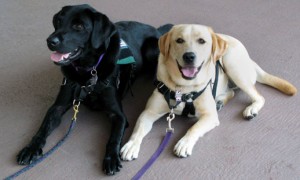It seems every year there is always a new trend when it comes to someone’s skin tone. Pale is in, tan is in, and everything in between. Unfortunately, being tan has had a long-term influence on many people, particularly teenagers, and this trend needs to end. It seems that many girls know some of the risks behind going tanning but continue to go anyway. It is time that we end the obsession with constantly having a golden glow. It seems pointless to me to crave such an unnatural tan knowing it could shave years off one’s life. So, with all the different facts people hear about the risks of going tanning I strongly believe its time that society understands the science behind all these risks.
With tanning packages that offer people a “discount” when it comes to getting their bronze glow it’s time to reevaluate what people are really paying for. The answer is easy. People, mostly white females under the age of thirty, are paying a lot of money to contribute to their own increase in having skin cancer. As if there weren’t enough things in the world that could be harmful to one’s health, this trend is at the top of the list. So, tanning is not just a financial commitment but it is also a time commitment. Many consumers of tanning salons lay in the bed daily for between 2-15 minutes. Researchers share that even a few minutes in this tanning bed is equivalent lying in the sun at the equator with its rays being three times as strong. With this intense amount of UV rays directly on someone’s skin and approximately 28 million users in the United States its no wonder that there has been an increase in skin cancer. The International Agency for Research on Cancer strongly states that going indoor tanning is “carcinogenic” to a human’s life.
 The strong UV rays that are in these beds contribute to two different types of skin cancer. The first one is squamous cell carcinoma and is mostly diagnosed in people under the age of 30. Between the years 1981 and 2006 there was a 145% increase in these diagnoses. The second type of cancer that is the most rare but the deadliest is melanoma. This cancer inhabits skin cells and travels throughout the body extremely quickly. It is very important for people to be able to recognize the signs that melanoma could be forming. SkinCancer.org identifies the “ABCDEs” of the beginning of melanoma. “A” stands for asymmetry. This means the mole or freckle is uneven and if there were to be an imaginary line drawn through it the two sides would not be even. “B” is to check the borders of the mark. If the borders are uneven, it can indicate that melanoma is a possible diagnosis. “C” associates to always check the color and make sure it is even and not oddly colored in one place. “D” shows the importance behind the diameter of the mark. Healthy skin marks are usually flat and within ¼ of an inch. Melanoma marks can be identified because of their larger size that is greater than ¼ of an inch. Finally, the “E” represents any type of evolvement of the mark from its location to its flatness on the skin. All of these indications are very important in order to prevent the spread of melanoma.
The strong UV rays that are in these beds contribute to two different types of skin cancer. The first one is squamous cell carcinoma and is mostly diagnosed in people under the age of 30. Between the years 1981 and 2006 there was a 145% increase in these diagnoses. The second type of cancer that is the most rare but the deadliest is melanoma. This cancer inhabits skin cells and travels throughout the body extremely quickly. It is very important for people to be able to recognize the signs that melanoma could be forming. SkinCancer.org identifies the “ABCDEs” of the beginning of melanoma. “A” stands for asymmetry. This means the mole or freckle is uneven and if there were to be an imaginary line drawn through it the two sides would not be even. “B” is to check the borders of the mark. If the borders are uneven, it can indicate that melanoma is a possible diagnosis. “C” associates to always check the color and make sure it is even and not oddly colored in one place. “D” shows the importance behind the diameter of the mark. Healthy skin marks are usually flat and within ¼ of an inch. Melanoma marks can be identified because of their larger size that is greater than ¼ of an inch. Finally, the “E” represents any type of evolvement of the mark from its location to its flatness on the skin. All of these indications are very important in order to prevent the spread of melanoma.
Works Cited
http://www.ncbi.nlm.nih.gov/pmc/articles/PMC3440095/
http://www.skincancer.org/skin-cancer-information/melanoma#panel1-1





















 admit, everyone loves the look of having a nice tan. What used to be a rare luxury in the summertime has now become one of the most harmful obsessions for humans, especially young girls. With very busy social lives that entail many events that girls think they would look significantly better at if they were tan, year round tanning is becoming extremely deadly.
admit, everyone loves the look of having a nice tan. What used to be a rare luxury in the summertime has now become one of the most harmful obsessions for humans, especially young girls. With very busy social lives that entail many events that girls think they would look significantly better at if they were tan, year round tanning is becoming extremely deadly.
